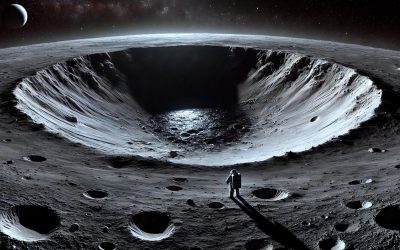Atomic stability is far from universal, with some elements enduring indefinitely while others quickly disintegrate. For instance, Lead-208 exhibits perpetual stability, whereas the synthetic isotope Technetium-99 decays within hours. This fundamental difference in atomic longevity is rooted in the intricate structure of the atom’s nucleus. Crucially, specific “magic numbers” of nuclear particles are understood to grant certain isotopes exceptional resistance to radioactive decay.
What precisely are these ‘magic numbers,’ and what accounts for their distinct significance?
The stability of atomic nuclei varies significantly, determined by the quantity of nuclear particles they contain. Some isotopes, such as lead-208 and calcium-40, exhibit extraordinary resilience. Categorized as primordial isotopes, they have persisted since Earth’s formation and are expected to endure indefinitely. In stark contrast, other nuclei, like oganesson-294 and tennessine-294, are exceptionally ephemeral, succumbing to radioactive decay almost immediately. Their fleeting half-lives are recorded at a mere 0.89 and 0.80 milliseconds, respectively.
Atomic stability is intrinsically linked to an atom’s mass, with a consistent observation that heavier elements typically exhibit less stability. Yet, during the 1940s and 1950s, researchers discovered that numerous lighter elements also possess radioactive isotopes. Key examples, such as carbon-14 and potassium-40, undergo a slow process of radioactive decay, collectively accounting for a substantial portion of the planet’s natural background radiation.
Scientists observed that specific quantities of protons and neutrons yielded exceptionally stable atomic nuclei. These particular counts were subsequently designated as “magic numbers.”
Nuclear physicist David Jenkins of the University of York in the U.K. has identified 2, 8, 20, 28, 50, 82, and 126 as “magic numbers,” which signify exceptionally stable configurations of protons and neutrons within an atomic nucleus. Jenkins highlighted the nucleus of the helium atom, comprising two protons and two neutrons, as the lightest and a prime example of this profound nuclear stability.
The fundamental reasons behind the atomic nucleus’s often non-spherical geometry are a subject of ongoing scientific inquiry.
Heavier, unstable atoms undergo nuclear decay, a fundamental process during which they spontaneously expel helium nuclei, widely recognized as alpha particles.
Jenkins highlighted a curious aspect of atomic decay, questioning why atoms don’t simply shed individual protons or neutrons during the process. The critical factor, he explained, is the exceptional stability of the alpha particle, a characteristic directly linked to the scientific concept of ‘magic numbers’.
Additional magic nuclei include oxygen-16, an isotope composed of eight protons and eight neutrons, and calcium-40, which features an equal complement of twenty protons and twenty neutrons. Also prominent is lead-208, containing 82 protons and 126 neutrons, a nuclide recognized as the heaviest stable element identified to date.
Confronted by perplexing experimental observations, physicists conceptualized the “nuclear shell model.” This innovative framework draws a direct parallel to the electronic shells, which are crucial for elucidating the chemical properties of atoms.
Jenkins detailed a theoretical model positing that protons and neutrons are organized into shells within the nucleus, much like electrons orbit in an atom. He clarified that, under this concept, nuclear excitations would involve these subatomic particles transitioning between these distinct energy shells.
Within the atomic nucleus, protons and neutrons arrange themselves into distinct “shells,” each characterized by fixed, quantized energy levels, mirroring the behavior of electron shells. The nucleus achieves its highest degree of stability when these shells are completely filled. While the precise quantum mechanical factors at play are complex, a prominent theory suggests that the strong force—the fundamental interaction responsible for binding these nuclear particles—exhibits a surprisingly heightened strength per particle when these shells are fully formed.
In nuclear physics, “magic numbers” represent the precise quantities of protons or neutrons required to fully occupy an atom’s nuclear shells, with distinct shell configurations existing for each particle type. This principle allows isotopes to be categorized based on their stability. An isotope is considered “singly magic” if either its proton or neutron count aligns with one of these magic numbers; a notable example is the primordial isotope iron-56. When both the proton and neutron numbers correspond to magic numbers, the isotope achieves exceptional stability and is termed “doubly magic,” as exemplified by oxygen-16 and lead-208.
Such doubly magic systems are a rare occurrence, yet they display captivating quantum features, Jenkins observed.
Doubly magic systems are characterized by a perfectly spherical nucleus, which results from an even distribution of matter and charge. This “completely round” structure, as described by the speaker, stands in stark contrast to most atomic nuclei, which are typically deformed, rotating, and possess a fundamentally different internal architecture.
The full extent of this scientific model’s predictive power is still unknown. Take Tin-100, for example: despite its status as the heaviest doubly magic nucleus with 50 protons and 50 neutrons, it endures for a mere 1.2 seconds before decaying. Moreover, unbihexium, projected as the next ‘magic element’ after lead, has never been successfully synthesized. These observations leave a crucial question unresolved: whether the anticipated ‘magic stability boost’ will be robust enough to enable scientists to add an eighth row to the periodic table.







